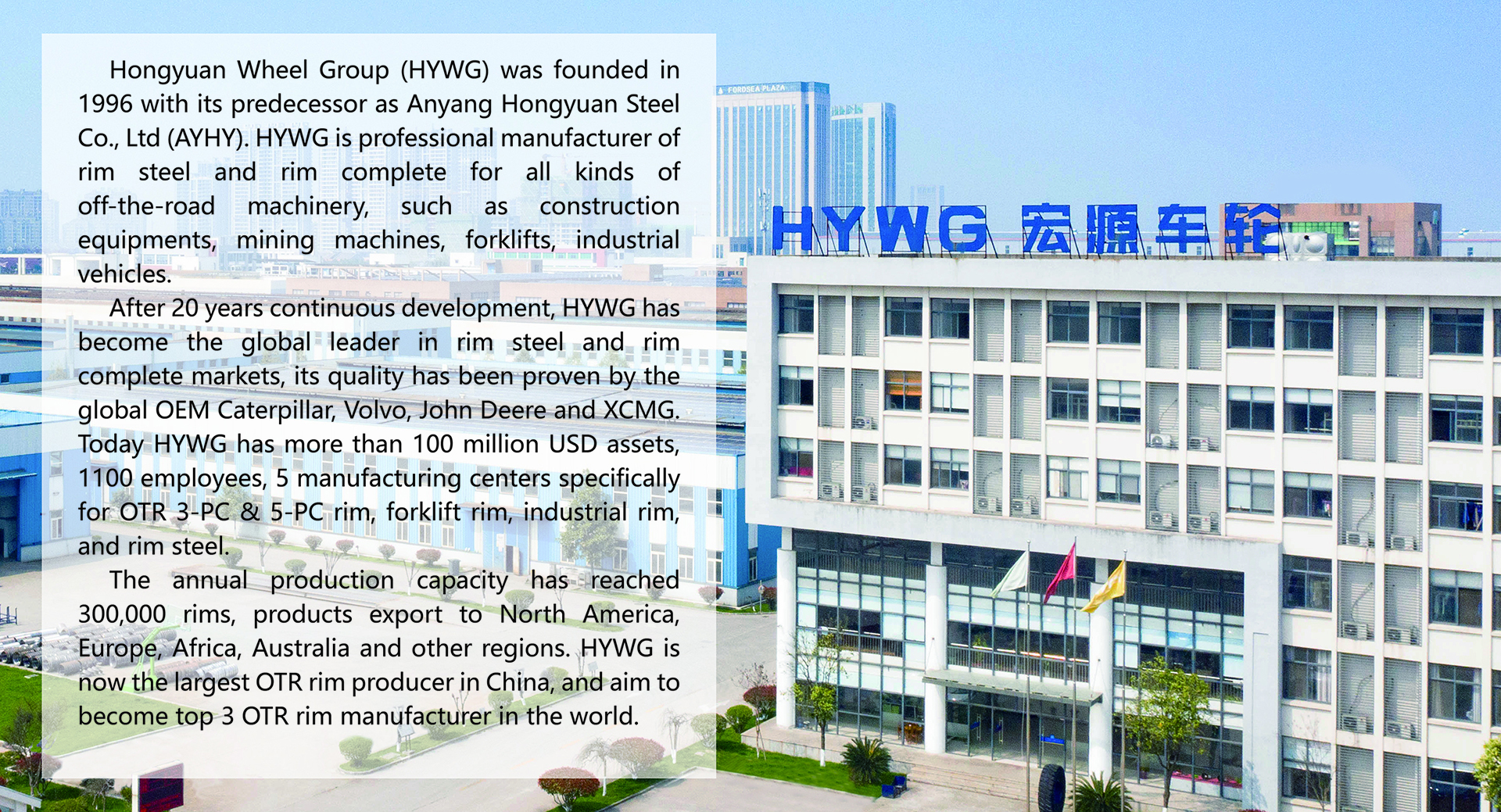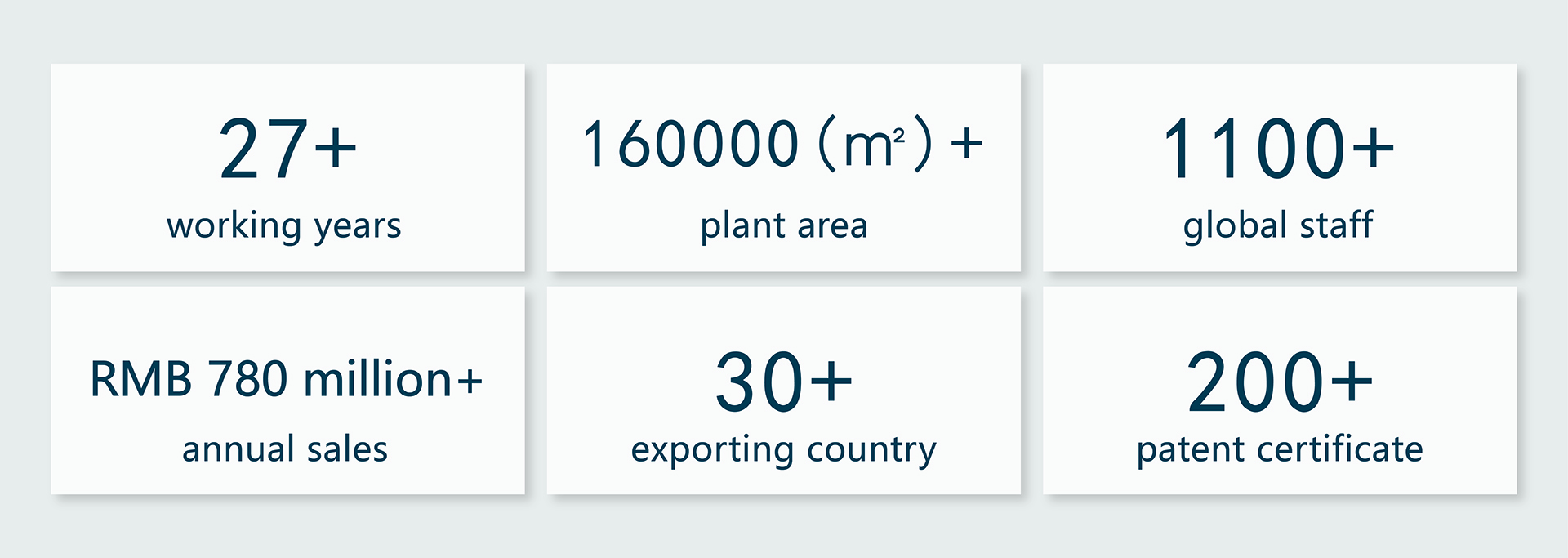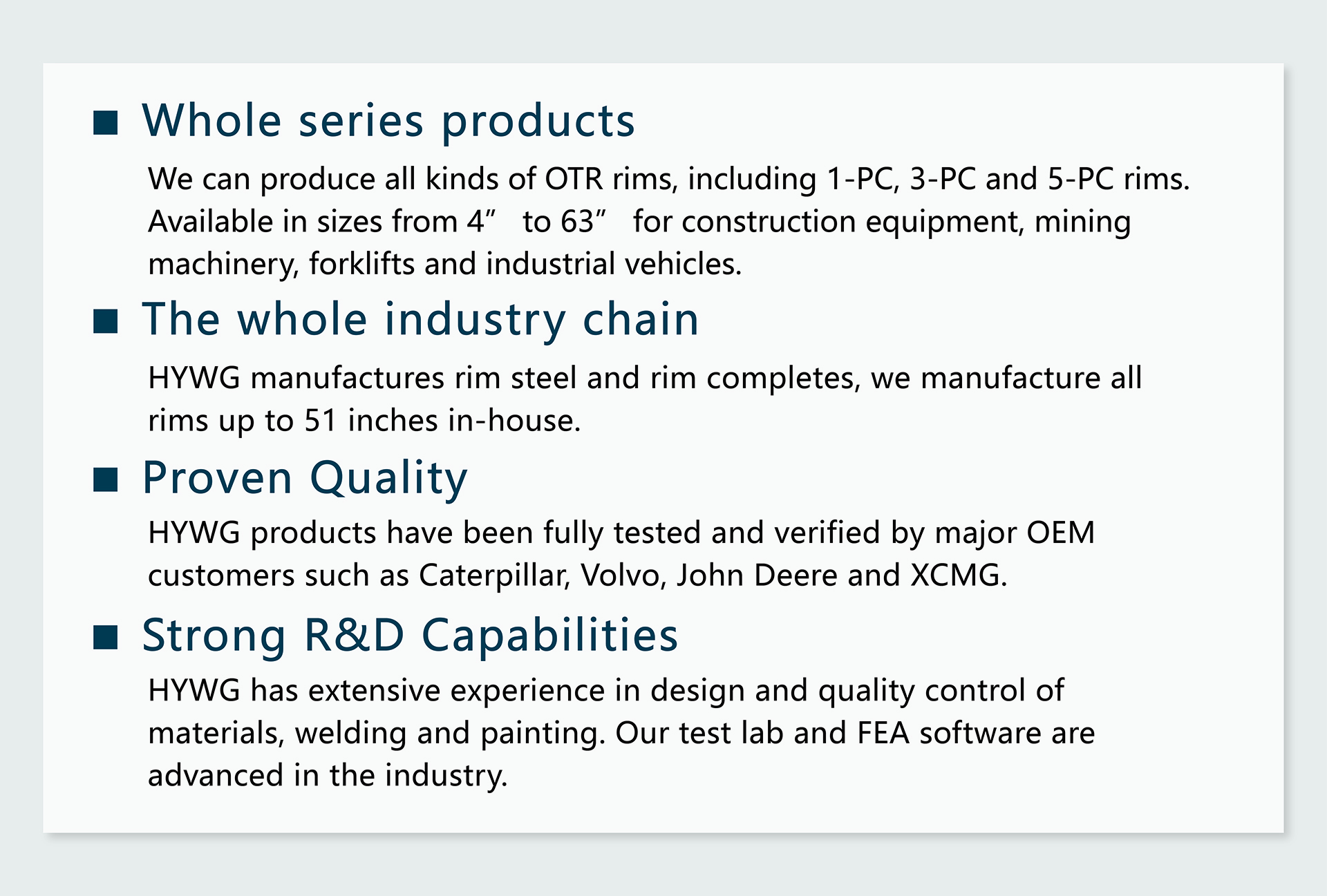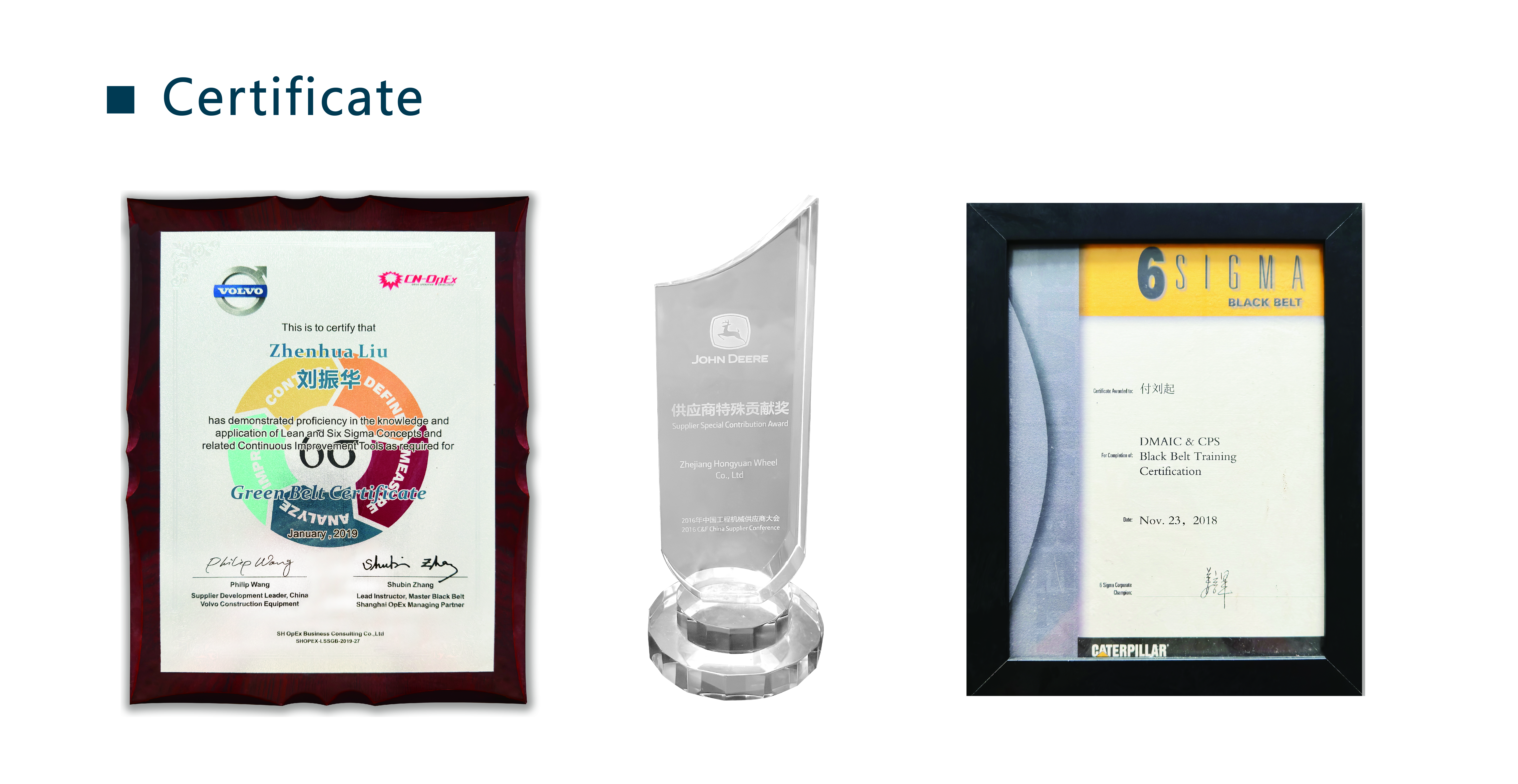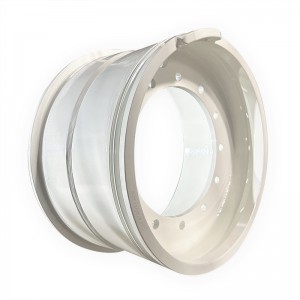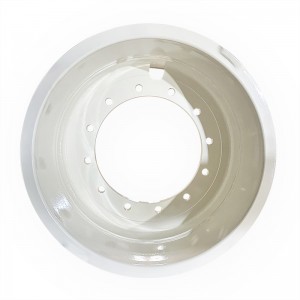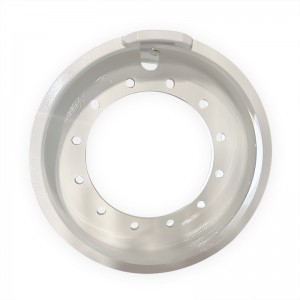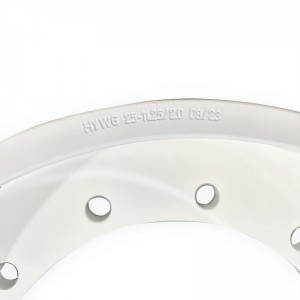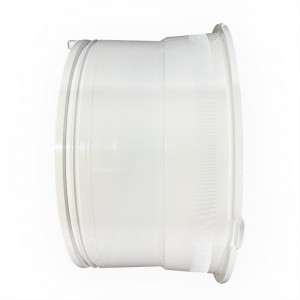11.25-25/2.0 rim for Forklift Universal
Here are the key features and characteristics of a Forklift:
Forklifts use specialized wheels designed to meet the specific demands of their operation. The type of wheels used on a forklift can vary depending on factors such as the forklift's design, intended application, load capacity, and the type of surface it operates on. Some of the common types of wheels found on forklifts include:
1. Cushion Tires:
Cushion tires are made of solid rubber or a rubber compound filled with foam. They are suitable for indoor use on smooth and flat surfaces, such as concrete or asphalt floors. Cushion tires provide stability and maneuverability, making them ideal for narrow aisles and confined spaces. They are commonly used in electric forklifts and are more suitable for indoor applications due to their limited shock absorption.
2. Pneumatic Tires:
Pneumatic tires are similar to regular automobile tires, filled with air. They are best suited for outdoor use and are designed to operate on rough or uneven surfaces, including gravel, dirt, and rough terrain. Pneumatic tires offer better shock absorption, traction, and stability, making them suitable for construction sites, lumber yards, and other outdoor applications. There are two types of pneumatic tires for forklifts: pneumatic bias-ply and pneumatic radial.
3. Solid Pneumatic Tires:
Solid pneumatic tires are made of solid rubber, offering similar benefits to pneumatic tires in terms of traction and stability on rough terrain. However, they do not require air, eliminating the risk of punctures and flats. Solid pneumatic tires are commonly used in outdoor forklifts operating in demanding environments.
4. Polyurethane Tires:
Polyurethane tires are made of a durable polyurethane material and are commonly used on electric forklifts. They are best suited for indoor applications on smooth surfaces. Polyurethane tires provide excellent traction and durability while offering low rolling resistance.
5. Dual Tires (Dual Wheels):
Some forklifts, especially those used in heavy-duty applications, may use dual tires or dual wheels on the rear axle. Dual tires provide increased load-carrying capacity and improved stability for lifting heavy loads.
The choice of forklift wheels depends on the specific requirements of the forklift's application, the surface it will be operating on, and the load-carrying capacity needed. Regular maintenance and inspection of forklift wheels are essential to ensure safe and efficient operation.
More Choices
| Forklift | 3.00-8 |
| Forklift | 4.33-8 |
| Forklift | 4.00-9 |
| Forklift | 6.00-9 |
| Forklift | 5.00-10 |
| Forklift | 6.50-10 |
| Forklift | 5.00-12 |
| Forklift | 8.00-12 |
| Forklift | 4.50-15 |
| Forklift | 5.50-15 |
| Forklift | 6.50-15 |
| Forklift | 7.00-15 |
| Forklift | 8.00-15 |
| Forklift | 9.75-15 |
| Forklift | 11.00-15 |
